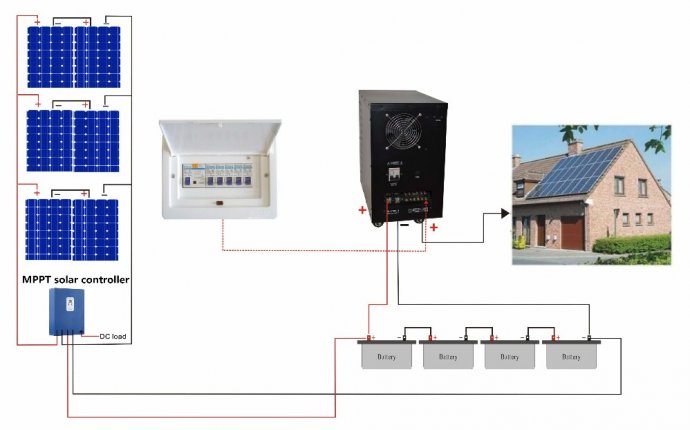
Complete solar system for home Use
In the northern half of the U.S. — and even much of the South — installing a residential solar hot water system doesn’t make any sense. It’s time to rethink traditional advice about installing a solar hot water system, because it’s now cheaper to heat water with a photovoltaic (PV) array than solar thermal collectors.
In short, unless you’re building a laundromat or college dorm, solar thermal is dead.
The idea has been percolating for six years
In the early days of PV, when PV equipment was much more expensive than it is now, homeowners with PV systems (especially off-grid homeowners) were instructed not to use electricity for heating. After all, since electricity is precious and expensive, and since PV power usually costs even more than grid power, it made sense to save electricity for uses like refrigeration, lighting, and home entertainment.
For decades, we all assumed that the greenest way to heat domestic hot water was to use a solar thermal system. But then two things happened: PV equipment got cheaper, and heat-pump water heaters became widely available.
The logic of using a PV system to heat water was first explained to me in early 2006 by Charlie Stephens, a policy analyst for the Oregon Department of Energy. I reported the details of that conversation in an article, “Heating Water With PV, ” published in the May 2006 issue of Energy Design Update.
“If you want to do solar water heating and solar space heating, solar thermal remains too expensive, ” Stephens told me. “It’s not as cost-effective as using an air-source heat pumpHeat pump that relies on outside air as the heat source and heat sink; not as effective in cold climates as ground-source heat pumps. coupled to a PV array. In our climate, a properly sized solar thermal system can provide 100 percent of your hot water in the summertime, but it won’t do diddly in the wintertime. So you paid $4, 000 for a system that provides 40 or 50 percent of your hot water needs. If instead, using the same money, you just add an extra kilowatt of PV to the roof, you could heat all of your hot water year round with an air-source heat pump.”
You can quibble with the details used in Stephens’ argument — it may take more than a kilowatt of PV to meet your hot water needs, for example, and his 2006 price estimate for installing a solar hot water system is now much too low — but his conclusion is even more valid now than when it was first made.
Some solar-heated water goes to waste
Solar thermal proponents know how to calculate the number of gallons of hot water produced by a typical 4' by 8' solar collector in a variety of climates. After calculating the thermal energy that this represents, they usually concluded (before PV prices dropped, anyway) that solar thermal collectors were a better bargain than a PV array.
But the number of gallons of hot water produced by a solar collector is always less than the number of gallons actually used by the homeowners. After all, if great quantities of hot water are produced on a day when it isn’t needed, you can’t really count the energy production in your annual tally.
Solar thermal energy is inconsistent, and during the long sunny days of summer, most solar thermal systems make more hot water than the typical family can use.
Although Charlie Stephens (pessimistically) estimated that a residential solar thermal system in the Pacific Northwest would only supply about 40% and 50% of a family’s annual hot water needs, the so-called “solar fraction” will be higher in other climates. In a 2006 study, researchers from Steven Winter Associates monitored two residential solar thermal systems for a year, one in Wisconsin and one in Massachusetts. Each house had two solar collectors. The solar fractions of these two systems were 63% and 61%, respectively.
Comparing solar thermal and PV systems
Compared to a PV system, a solar thermal system has several disadvantages:
- Unlike a PV system, most solar thermal systems have moving parts (pumps and solenoid valves).
- In freezing climates, solar thermal systems are sometimes subject to freeze damage.
- Solar thermal systems require regular maintenance, including antifreeze replacement.
- While a pole-mounted PV array can include a tracking mechanism to follow the sun's path across the sky, it's virtually impossible to install solar thermal collectors on a tracker.
- On average, PV systems probably last longer than solar thermal systems.









